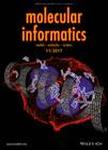版权所有:内蒙古大学图书馆 技术提供:维普资讯• 智图
内蒙古自治区呼和浩特市赛罕区大学西街235号 邮编: 010021

作者机构:Rheinische Friedrich Wilhelms Univ Bonn Bonn Aachen Int Ctr Informat Technol Dept Life Sci Informat Bonn Germany Rheinische Friedrich Wilhelms Univ Bonn Lamarr Inst Machine Learning & Artificial Intellig Bonn Germany Rheinische Friedrich Wilhelms Univ Bonn Bonn Aachen Int Ctr Informat Technol Dept Life Sci Informat Friedrich Hirzebruch Allee 5-6 D-53115 Bonn Germany
出 版 物:《MOLECULAR INFORMATICS》 (定量化结构-化学活性关系与综合科学)
年 卷 期:2024年第43卷第1期
页 面:e202300288-e202300288页
核心收录:
学科分类:0710[理学-生物学] 1007[医学-药学(可授医学、理学学位)] 0812[工学-计算机科学与技术(可授工学、理学学位)] 10[医学]
基 金:Projekt DEAL
主 题:drug design language models recurrent neural networks encoder-decoder frameworks transformers attention mechanisms
摘 要:In drug discovery, chemical language models (CLMs) originating from natural language processing offer new opportunities for molecular design. CLMs have been developed using recurrent neural network (RNN) or transformer architectures. For the predictive performance of RNN-based encoder-decoder frameworks and transformers, attention mechanisms play a central role. Among others, emerging application areas for CLMs include constrained generative modeling and the prediction of chemical reactions or drug-target interactions. Since CLMs are applicable to any compound or target data that can be presented in a sequential format and tokenized, mappings of different types of sequences can be learned. For example, active compounds can be predicted from protein sequence motifs. Novel off-the-beat-path applications can also be considered. For example, analogue series from medicinal chemistry can be perceived and represented as chemical sequences and extended with new compounds using CLMs. Herein, methodological features of CLMs and different applications are discussed. image